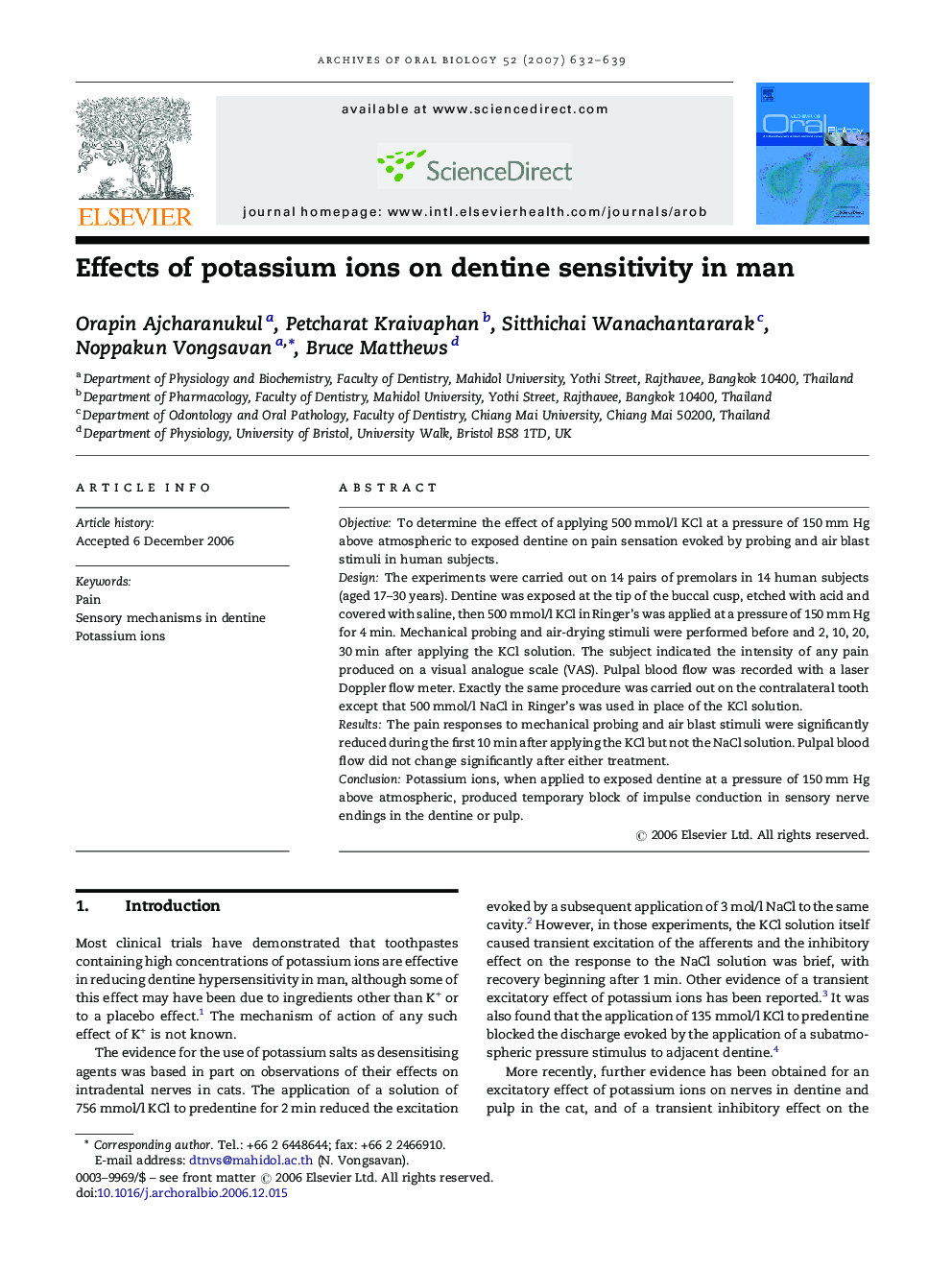| Article ID | Journal | Published Year | Pages | File Type |
|---|---|---|---|---|
| 3121553 | Archives of Oral Biology | 2007 | 8 Pages |
ObjectiveTo determine the effect of applying 500 mmol/l KCl at a pressure of 150 mm Hg above atmospheric to exposed dentine on pain sensation evoked by probing and air blast stimuli in human subjects.DesignThe experiments were carried out on 14 pairs of premolars in 14 human subjects (aged 17–30 years). Dentine was exposed at the tip of the buccal cusp, etched with acid and covered with saline, then 500 mmol/l KCl in Ringer's was applied at a pressure of 150 mm Hg for 4 min. Mechanical probing and air-drying stimuli were performed before and 2, 10, 20, 30 min after applying the KCl solution. The subject indicated the intensity of any pain produced on a visual analogue scale (VAS). Pulpal blood flow was recorded with a laser Doppler flow meter. Exactly the same procedure was carried out on the contralateral tooth except that 500 mmol/l NaCl in Ringer's was used in place of the KCl solution.ResultsThe pain responses to mechanical probing and air blast stimuli were significantly reduced during the first 10 min after applying the KCl but not the NaCl solution. Pulpal blood flow did not change significantly after either treatment.ConclusionPotassium ions, when applied to exposed dentine at a pressure of 150 mm Hg above atmospheric, produced temporary block of impulse conduction in sensory nerve endings in the dentine or pulp.
